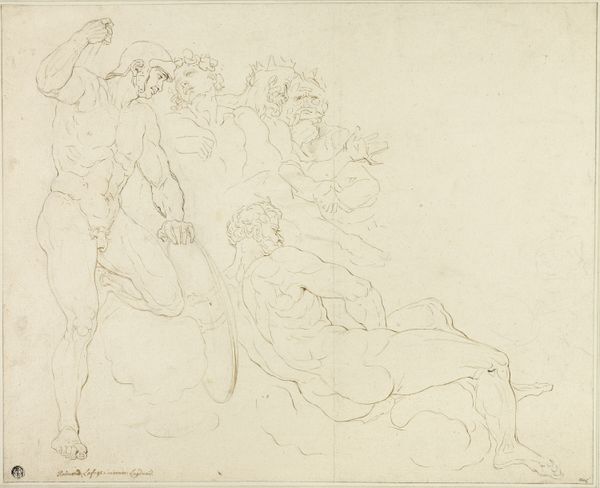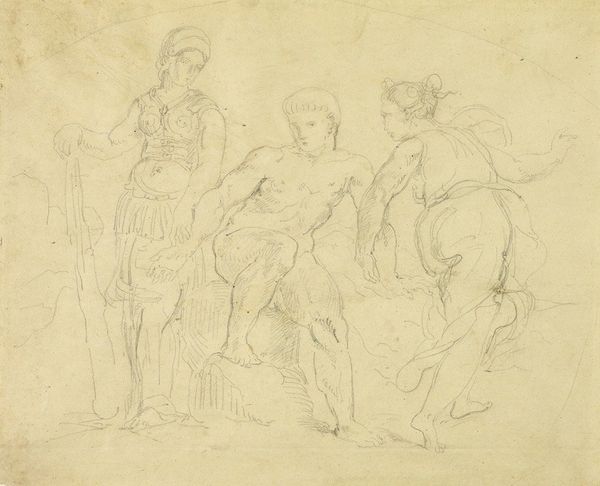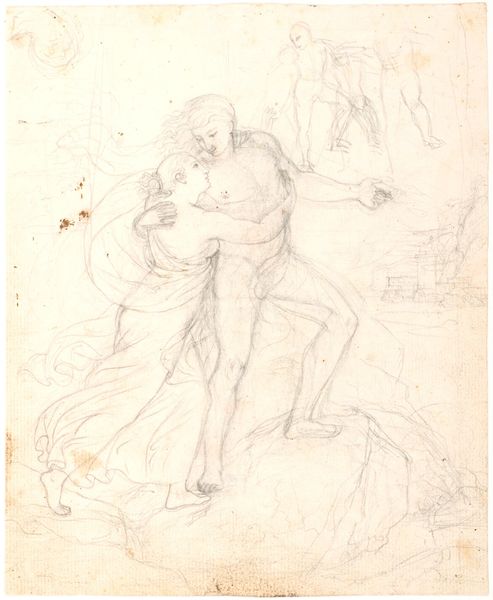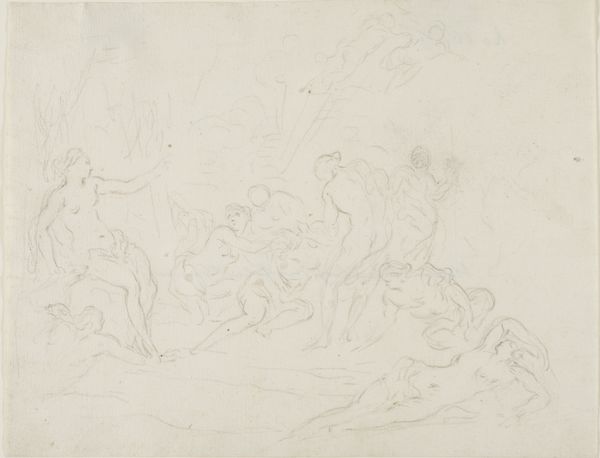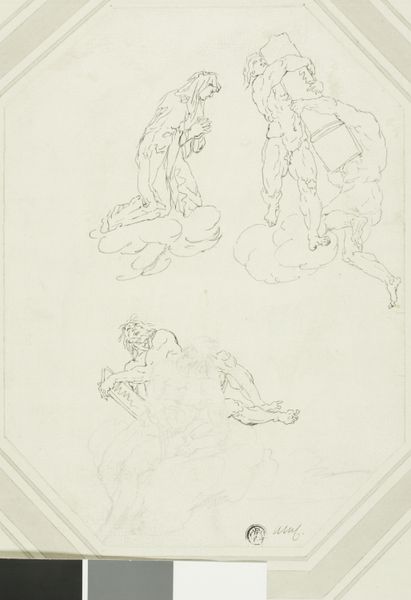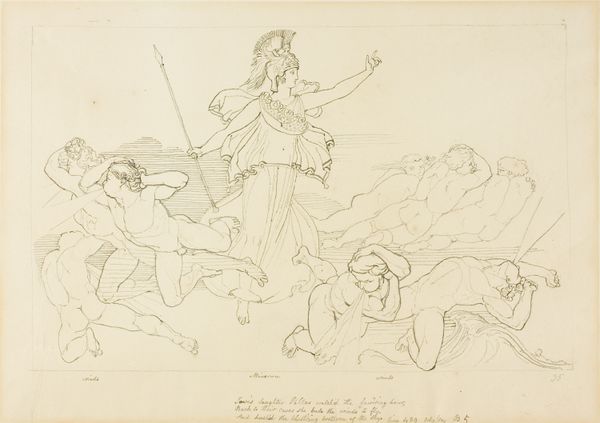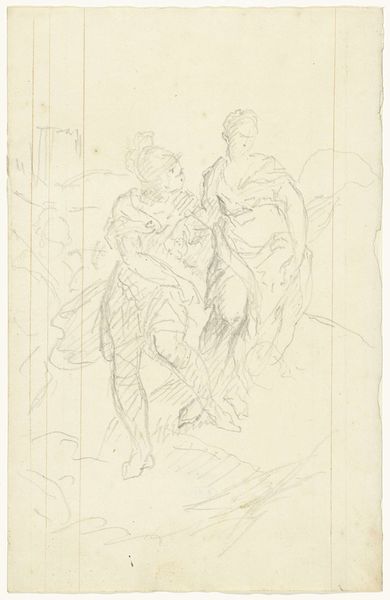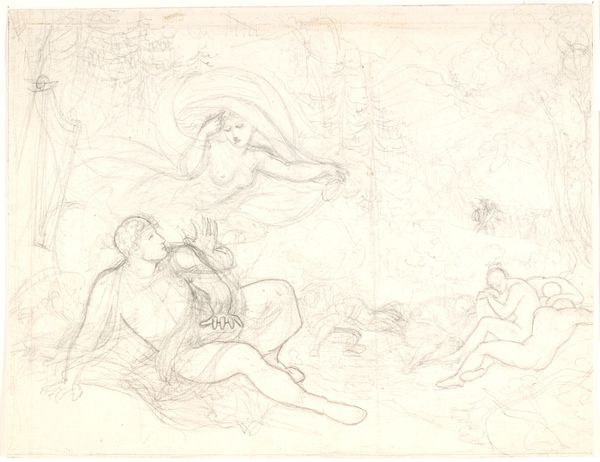
drawing, paper, pencil
#
drawing
#
landscape
#
figuration
#
paper
#
romanticism
#
pencil
Dimensions: 188 mm (height) x 230 mm (width) (bladmaal)
Editor: This is C.G. Kratzenstein Stub's drawing, "Brage og Idun," created between 1814 and 1816, using pencil on paper. It’s very ethereal and Romantic, but the pencil drawing seems almost unfinished. What strikes you about this work? Curator: I am drawn to the materiality of this drawing. Notice the subtle textures achievable with graphite, a material directly linked to the industrialization and resource extraction happening during the Romantic period. The landscape is but a quick gestural indication, focusing instead on the social figures, but even those are outlined with clear lines of production. Editor: So you are saying the pencil itself, and how it’s made, is important? Curator: Absolutely. Pencil wasn’t just a drawing tool; it was part of a larger system of labor and trade. The romantic portrayal is a very limited perspective on the whole artwork. Also, look at the varying pressure – it’s a means to an end. What are the implications of the drawing being on paper rather than, say, directly onto a wall as a mural? Editor: That's interesting, the ease of portability maybe? It was meant to be moved around rather than static. Did Stub's social position enable access to paper when others couldn’t obtain it? Curator: Precisely. Paper's materiality indicates access, wealth, and a certain level of literacy and privilege within 19th-century Danish society. This directly reflects the means of production during the Romantic era, linking "high art" to broader systems of production, labor, and ultimately consumption. Editor: I hadn't considered all those layers within something as simple as a pencil drawing! Now I’m really thinking about access to materials shaping artistic output. Curator: It is through material investigation that we can unravel so many historical and cultural circumstances that influenced not just this picture, but artistic practices during this era.
Comments
No comments
Be the first to comment and join the conversation on the ultimate creative platform.
